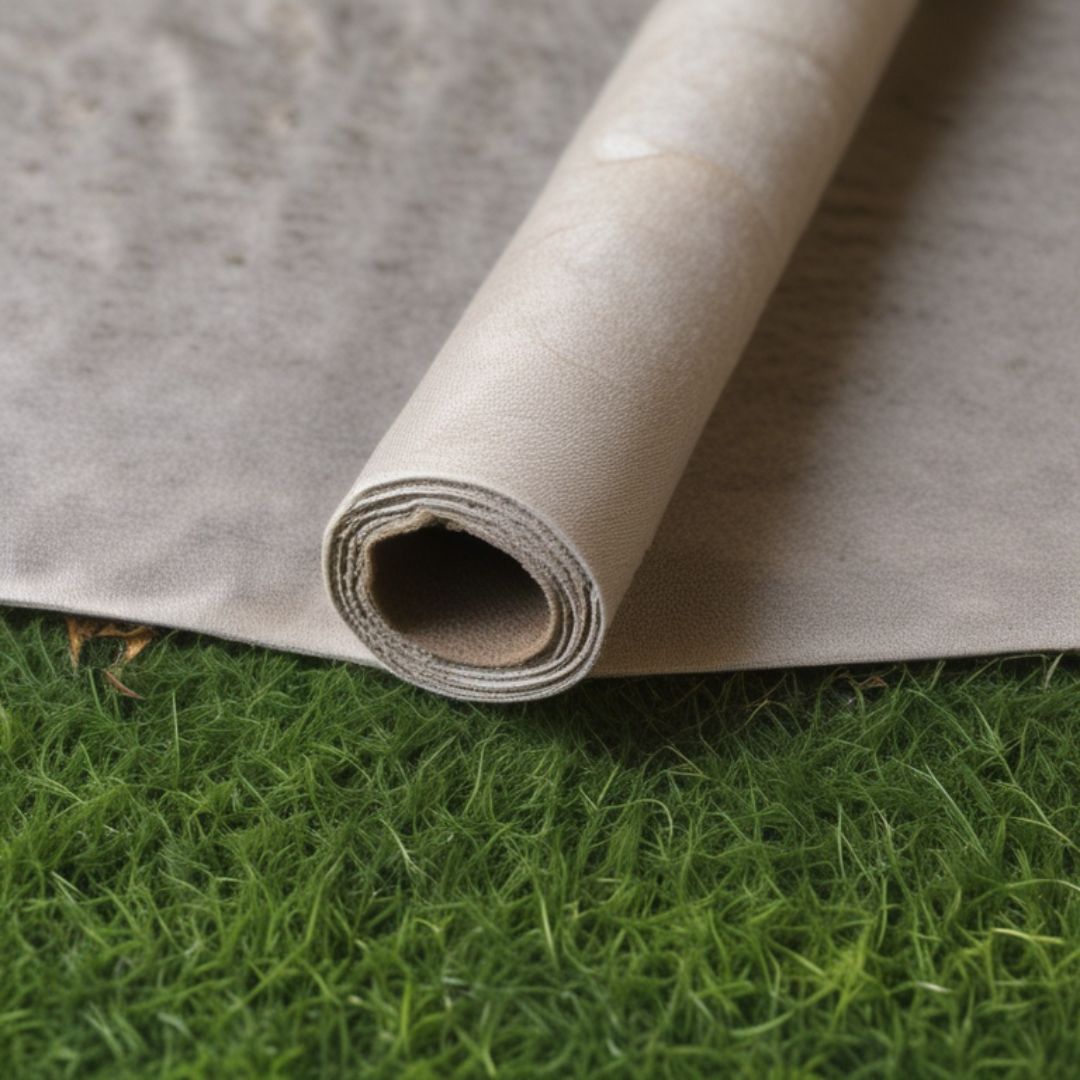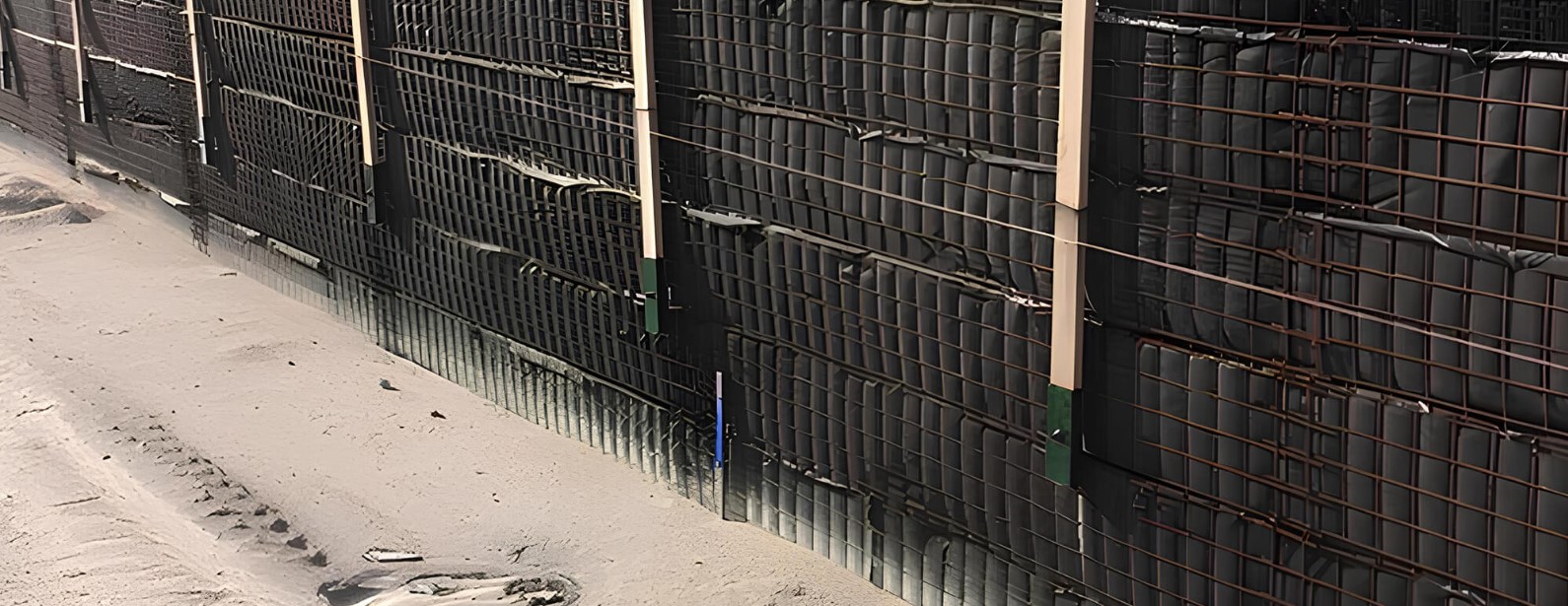What is a geotextile in civil engineering?
Geotextiles are a class of permeable geosynthetic materials used in civil engineering to improve soil stability, drainage, and erosion control. They are fabrics made from polymers like polypropylene and polyester, which act as selective filters to prevent the migration of fine soil particles. Geotextiles prevent the movement of fine soil particles that could clog drainage systems or compromise soil stability. Geotextiles are highly effective in drainage, separating dissimilar soil layers, and providing erosion control in various civil engineering applications. The wide range of uses makes them highly beneficial in civil engineering projects. Geotextiles are available in two basic forms: woven, which resemble cloth, and nonwoven, which have a felt-like texture.
Geotextiles emerged in the 1950s as optimal substitutes for granular soil filters. Geotextiles had a wide range of applications, particularly in drainage and soil stabilization. R.J. Barrett pioneered work on geotextiles, particularly their use in shoreline protection. Achieving permeability while retaining soil particles posed a significant design challenge.
Extensive research was conducted on geotextiles to enhance their effectiveness and versatility. Based on this research, a wider variety of geotextile designs were developed. These new designs met the unique requirements of various civil engineering applications. These new geotextile designs provided customized solutions for filtration, drainage, erosion control, and slope stability in streets, railways, and more. The advantages of geotextiles were further enhanced by new manufacturing techniques such as needle-punching and heat-bonding.
What are the main uses of geotextiles?
Geotextiles are water resistant permeable fabrics or filtration fibers used in soil erosion control, and soil improvement contexts. Typically, they have five different functions in soil but are chosen for their ability to help minimize erosion, separate soil types, or even filter soil from water or liquids they’re exposed to. For a deeper understanding, we classify them based on their five uses:
Separation: Geotextiles work as barriers between dissimilar soil materials, preserving the individual characteristics of those materials. This is, for example, noted in the road construction where the geotextiles separate the fine subgrade aggregate from the coarse aggregates of the base layer, leaving the drainage capacity of the road intact.
Drainage: Geotextiles ensure bidirectional water flow and restrict the movement of fine soil particles. Lateral drainage flow and the hindrance to the capillary rise of ground water make the geotextiles useful around the houses, roads, and curbs.
Filtration: Water filters through geotextiles in both directions, and nothing will pass through the filters. They are laterally drainable but they are good against capillary rise. Geotextiles are installed horizontally and vertically. Applications around houses, roads, and curbs are the best.
Reinforcement: Geotextiles can indeed be used to reinforce weaker soils, particularly when used as basal reinforcement in embankments or roadways over soft soils. They help by providing tensile strength which helps to distribute loads more evenly and reduce differential settlement. When used in conjunction with other materials (e.g., geogrids or geocells), can contribute to the construction of steep embankments by providing separation, drainage, and filtration. They can also provide some reinforcement if the stress applied is within their tensile strength limits.
Protection: Geotextiles in several layers are used to protect the integrity of embankments by reducing erosion of fine materials. They also act as a cushion to absorb and distribute pressure, protecting geomembranes or other underlying layers. This property makes geotextiles useful in rock beaching, mattress structures, and underwater deployment. In addition, some of the geotextiles can be infused with asphaltic emulsions to make them impermeable, suitable for moisture barriers in pavement repairs.
What are the common types of geotextiles?
Based on their manufacturing process, geotextiles are categorized into two primary types: woven and non-woven
Woven geotextiles
Woven geotextiles were the first type of geotextiles developed. They were developed through adapting weaving techniques commonly used in textile production. Woven geotextiles have a characteristic appearance with two sets of parallel threads. In this structure, the warp threads run longitudinally and the weft threads perpendicularly. Woven geotextiles are typically made from polypropylene and come in various forms, such as extruded tapes, monofilament yarns, or multifilament yarns.

Non-woven geotextiles
In contrast to woven geotextiles, non-woven geotextiles are created by bonding short staple fibers or continuous filament yarns. They can be bonded thermally, chemically, mechanically, or by combining these techniques. The kind of fiber (staple or continuous) has negligible impact on the properties of the non-woven geotextile. Thermally bonded nonwovens have a wider range of pore sizes compared to other types, offering greater flexibility in their application and have a thickness range of 0.5 to 1 millimeter. Conversely, chemically bonded nonwovens are generally thicker, around 3 millimeters. Mechanically bonded varieties require a larger quantity of polymer filaments and thus tend to be thicker (2–5 millimeters) and heavier.

Knitted geotextiles:
Knitted geotextiles are produced by interlocking yarn loops through knitting. There is only a finite supply of knitted geotextiles that are commercially available. As a consequence, they often combine knitting with another manufacturing method, like weaving.

What is the purpose of geotextiles?
Conventional methods of reinforcement fail to provide the numerous benefits geotextiles possess. These advantages stem from their ability to interact with soil in various ways.
Improved soil stability: Geotextiles boost the stability of the soil by distributing structural loads across a wider area. Consequently, the risk of settlement and failure is diminished by a wide margin. Geotextiles can also prevent differential settlement as they curb the undesirable mixing of different soil layers.
Cost-effective solutions: Geotextiles are a prevalent choice in civil engineering projects owing to their cost-effectiveness. They are more adept at reducing stress on the pocket and the soil than gravel and concrete. The need for excavation is also eliminated with the help of geotextiles, leading to time and cost savings.
Ease of installation: Workers and engineers alike do not experience complicated installation processes as geotextiles require minimal equipment to set up. It is possible to deploy them in various weather conditions and uneven terrain, reducing installation time and cost.
Environmentally friendly: Geotextiles are composed of synthetic or natural biodegradable fibers that lower the environmental impact. They also improve the soil quality, which positively influences the ecosystem.
Versatility: Gravel and concrete can be combined with geotextiles to improve structural strength and stability. They are suitable for drainage, filtration, reinforcement, erosion control, and soil stabilization applications.
Reinforcement and load distribution: The tensile and shear strengths of the soil get multiplied upon the installation of geotextiles. This attribute stems from a geotextile’s ability to help the soil function as a uniformly distributed reinforcement layer. The applied loads are effectively dispersed, thereby tapering any cases of deformation.
Isolation and leakage prevention: For construction projects, geotextiles keep different soil layers from mixing and leaking into each other. A characteristic is often seen in road construction where geotextiles prevent the base layer from mixing and being contaminated by the superimposed materials.
Drainage properties: Certain geotextiles facilitate the rapid removal of moisture from the soil as they possess excellent drainage capabilities. This addresses any issues related to moisture accumulation and infiltration. Optimal drainage helps with soil stability and reduces hydrological stress.
Chemical corrosion resistance: Geotextiles possess excellent resistance to chemical corrosion. This does not just guarantee long-term stability but also helps in their deployment in multiple situations.They can be deployed in varying engineered environments like chemical plants, landfills, and agricultural sites.
Convenient construction and maintenance: Easy customization and cutting properties of geotextiles help engineers devise specific solutions for specific challenges. Their ease of installation and handling make them a valuable asset. Soil, concrete, and rock can also be integrated with geotextiles to further strengthen the structure.
What are the limitations of geotextiles?
Geotextiles come with countless benefits for engineering applications. However, it is important to be mindful of the areas where they fall short:
Limited load capacity: While geotextiles are effective in many applications, they have a limited load-bearing capacity compared to concrete and gravel, making them unsuitable for high-load applications. Since it’s not their main function. To improve load capacity, geotextiles have to be paired with geogrids, or geocells which are principally designed for soil reinforcement
Durability concerns: Geotextiles can degrade due to exposure to UV radiation, heat, light, hydrolysis, and chemical attacks, which affect their long-term durability. However, products like StrataTex HSR™ offer high strength, low creep, and superior resistance to deformation, ensuring lasting performance even under demanding conditions.
Environmental impact: The hydrocarbons, petrochemicals and fossil fuels used to manufacture synthetic geotextiles increase the percentage of greenhouse gas emissions. These non-biodegradable materials also harm soil, water, air, and the ecological balance. It is recommended that research be conducted to explore and reduce the environmental impact of synthetic geotextiles.
Limited Lifespan: Geotextiles have a shorter lifespan when compared to more sturdy materials. Their efficiency in water control and soil conservation hinges on their ability to perform at their peak throughout their lifespan. To simplify your quality questions, choose brands that offer higher shelf life, and in-situ life span.
Strata's geotextile soil wall at NASA Kennedy Space Center

Project overview
A project to modernize a causeway in Titusville, FL, aimed to replace an aging bridge linking the city to the NASA Kennedy Space Center. The construction required building approaches on both sides of the bridge while keeping the road open to ensure access for NASA employees, researchers, public visitors, and dignitaries.
Challenges faced
The challenge was to maintain uninterrupted access to the Space Center during construction. This required a phased construction approach while working in a sensitive marine environment prone to storms. The project needed a flexible, temporary retaining wall system to support the bridge approach while accommodating both traffic and environmental factors.
Solution
A temporary reinforced soil wall was chosen, incorporating StrataGrid geogrids wrapped in nonwoven geotextile (ST 160). The geotextile served as a protective face wrap for the geogrids, ensuring stability and erosion control. The system provided a robust and aesthetically pleasing structure while allowing rapid construction and flexibility to work around obstacles, including a large-diameter pipe.a
Key benefits
● Cost-effective: Utilized locally sourced materials to minimize expenses.
● Robust design: Engineered to support full traffic loads expected over the bridge approach.
● Flexibility: Designed for easy installation and removal, accommodating large-diameter pipes within its structure.
● Aesthetic appeal: The façade was designed to be visually appealing due to high-profile traffic.
● Rapid construction: Quick assembly minimized downtime, crucial in the storm-prone South Florida environment.
Strata Geosystems’ reinforced soil wall solution effectively ensured continued access to NASA Kennedy Space Center during critical infrastructure upgrades. This project highlights Strata’s ability to deliver innovative engineering solutions tailored to complex environmental and logistical challenges.
A sustainable future with Strata Geosystems
Civil engineering projects have greatly benefited from the use of geotextiles in recent years. These fabrics are designed to interact with soil environments in multiple ways. They excel in five key functions: separation, filtration, reinforcement, protection, and drainage. Functioning as barriers between dissimilar soils, they prevent fine soil particles from migrating and improve the soil for steeper embankment construction. Geotextiles also protect embankments from erosion and act as effective drainage filters. Given the numerous benefits, geotextiles are a crucial innovation in civil engineering, improving soil stability, drainage, and erosion control. They improve soil stability, promote drainage, and curb erosion, all while being a cost-effective solution.
Strata Geosystems offers a complete range of geotextile products designed for civil engineering projects. Our product StrataTex HSR, a woven geotextile of unsurpassed strength, is specifically designed to reinforce soil structures.This product exhibits high tensile strength and modulus, making it the product of choice when used in reinforced soil applications like retaining walls, slope stabilization, and embankments. To add to it, it is a sturdy product with a proven ability to perform in a wide variety of soil types and environments.
Contact us today if you wish to know more about our range of geotextile products. Our team of experts is ever-ready to answer your queries and help you save time, and find the most effective solutions for your civil engineering needs.
